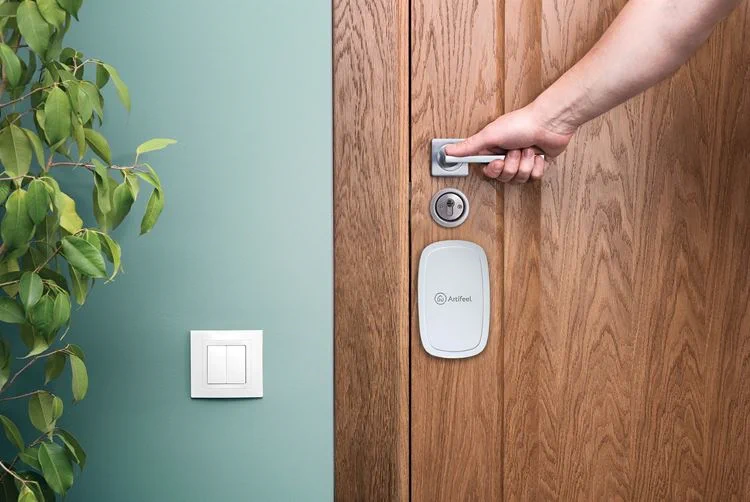Smart home
Low power wireless connectivity solutions for smart home


Nordic’s nRF5340 advanced multiprotocol SoC runs the Zephyr real-time operating system (RTOS) which supervises data collection and the ML prediction model for Check’In. The Nordic SoC integrates dual Arm® Cortex®-M33 processors; a dedicated application processor and a power-optimized network processor. Check’In’s ML model uses multiple sensor inputs to determine whether the door entry is a legitimate access attempt or an attempted break-in. Artifeel is writing its own application code using the Zephyr RTOS, with Nordic’s nRF Connect SDK [Software Development Kit] used to implement Zephyr on the nRF5340 SoC. The nRF Connect SDK supports applications using Bluetooth® Low Energy (Bluetooth LE) and includes examples, Bluetooth LE profiles and driver support for all peripherals.
The Bluetooth LE wireless connectivity provided by the Nordic SoC is planned to improve Check’In configuration and set-up, enable local troubleshooting and perform certain actions in the event an alert notification is received. Check’In also integrates cellular connectivity to report alarm notifications to the Cloud.
While most security alarm systems require the configuration of multiple components and pairing with a control panel for operation, Check’In does not rely on complex activation or deactivation codes. Powered by two 3V LM17500 (SAFT) high-density batteries, the alarm is always active and continuously reports activity for an estimated lifetime of two years before battery replacement. This endurance is achieved thanks in part to the ultra low power operating characteristics of the nRF5340 SoC.
Low power wireless connectivity solutions for smart home